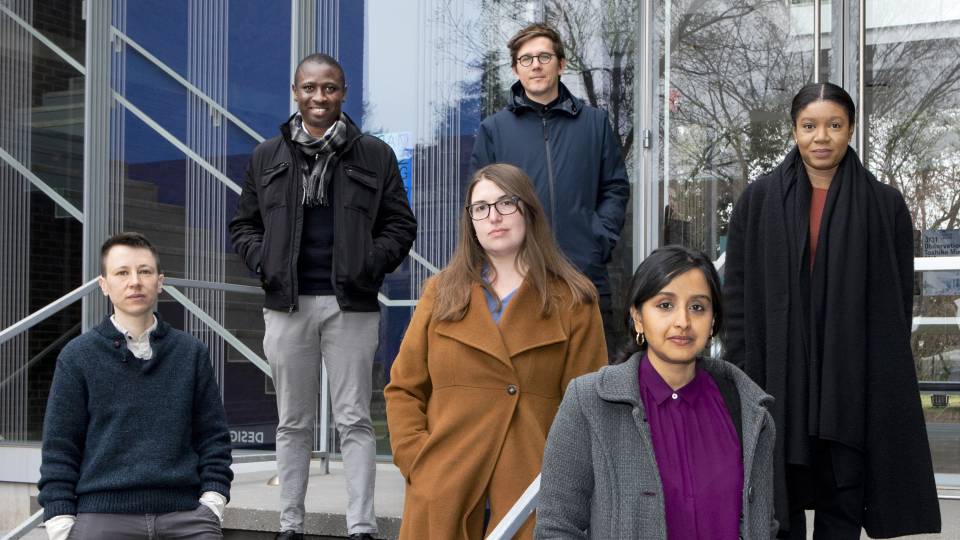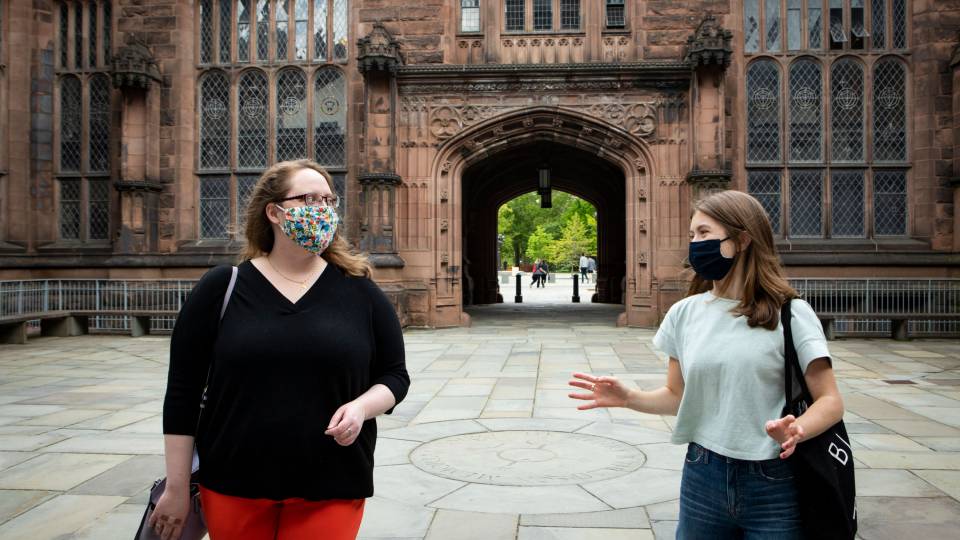Princeton University has received a grant from the Andrew W. Mellon Foundation to lead an interdisciplinary project on urbanism in the Americas.
The Princeton-Mellon Architecture, Urbanism and Humanities Initiative will receive $1.96 million distributed over four years. The project's focus is "Cities of the Americas: Architecture, Society, Policy and Culture," and the initiative will be led by Stan Allen, the George Dutton '27 Professor of Architecture, and Alison Isenberg, a professor of history and co-director of the Program in Urban Studies.
Allen said the initiative will build on broad faculty and student interest in urbanism over the last decade.
"It represents a major step forward in engaging the University community, and in particular Princeton's resources in the humanities," said Allen, who is also director of the Center for Architecture, Urbanism and Infrastructure and former dean of the architecture school. "When we first started looking at the potential faculty resources in urbanism, it was remarkable to find such a diverse group of faculty from so many different fields — from English to history, to engineering, sociology, American studies or Latin American studies — who had an interest in cities. … We are never going to solve the technical, design or policy issues facing cities today if we don’t have a larger understanding of the city as a cultural object: cities are, in a way, mankind's largest collective works of art."
Recent national and international trends regarding urban environments will present promising research avenues, Isenberg said.
"The past 10 or 15 years have witnessed a resurgence of interest in North American cities as dynamic, diverse and vital places," Isenberg said. "Many suburbs now struggle with economic problems formerly seen as 'urban.' As the urban-suburban dichotomy and the burden of 'urban crisis' have faded, urbanism as a broader framework becomes more compelling and open-ended. Simultaneously, globalization offers examples and contrasts, inspiration and defeat, that are provocative." These local and international trends partly explain why Princeton students have been drawn in recent years to the topic of cities, Isenberg noted.
The initiative is a collaborative effort among the undergraduate and graduate urban studies programs, the School of Architecture, the Program in Latin American Studies and the Program in American Studies. Some of the other academic units and resources that would be involved include the Princeton University Art Museum, Council of the Humanities, Department of History, Fund for Canadian Studies, Office of Population Research, Office of the Dean of the College, Department of English, Marquand Library of Art and Archaeology, Digital Map and Geospatial Information Center, and the Digital Humanities Initiative.
As part of its mission to advance meaningful work in the humanities and the arts, the Andrew W. Mellon Foundation in 2012 launched an initiative, "Architecture, Urbanism, and the Humanities," to support scholarship and higher education at the intersection of architecture and the humanities. The initiative emphasizes the joint contributions that the humanities and the design and planning disciplines may make to the understanding of the processes and effects of burgeoning urbanization. The grant in support of the new Princeton program is one of 10 made so far to major institutions of higher education and research.
The grant, Allen and Isenberg said, would allow Princeton students and faculty to share ideas, research methods and teaching formats with colleagues across campus and others in the field. Isenberg and Allen said that the grant components are structured to encourage faculty and student initiatives and proposals.
A central feature of the program will be a six-semester research forum for faculty and students that will promote discussion and support new work, with new leaders and themes each semester, beginning in fall 2014. The tentative themes are American places, infrastructure, crowds, home, property, and design and plan.
Other elements of the program include new courses, fellowships and public events.
Allen and Isenberg have proposed the development of 10 interdisciplinary courses (six supported by the grant and four by Princeton). The six Mellon-supported courses would be similar to atelier and studio classes, in which students engage in hands-on learning and produce a final project at the end of the course.
Through the visiting research fellowship program, one senior fellow and two junior fellows per year would join the initiative to teach and work on projects outside of their traditional fields, in pairs with Princeton faculty, to cultivate interdisciplinary perspectives.
To engage the public and surrounding communities, Allen and Isenberg propose a series of public programs, workshops and events, including two major conferences.
Student-specific elements of the initiative include funds for student-organized events; workshops for students undertaking senior theses or dissertations in topics related to urbanism; and support to expand use of geospatial and mapping resources.





